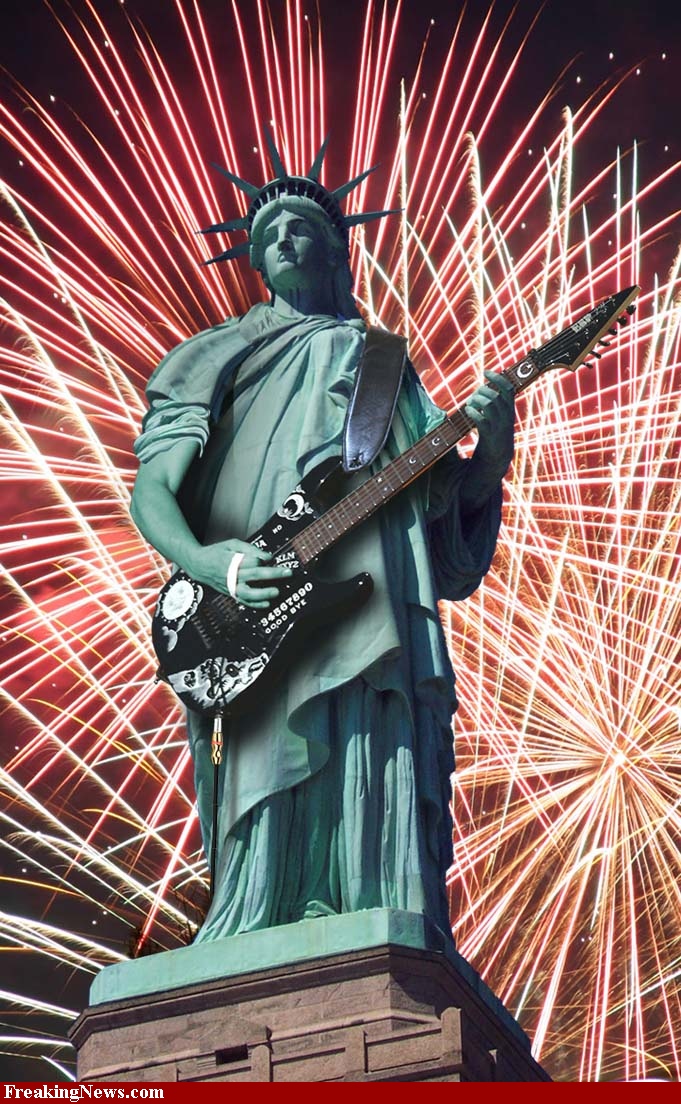|
Midterm1 (2013 midterm1 assignment) Sample Student Midterm Answers 2013 #1: Long Essay |
LITR 4333
|
 |
Cesar Cano
8 October 2013
Common characteristics in first world countries include a
republican government, access and development of technology, large urban areas
coupled with a diminishing rural population, and steady economies. These factors
create a unique social situation as well, developed countries become cultural
crossroads. Individuals and entire families find themselves living side by side
with people from various corners of the world. This voluntary migration creates
different expectations, aspirations, desires, attitudes and behaviors from each
immigrant group and the proceeding generations within each group. These actions
and emotions are then set in contrast to the ones held by the dominant culture
present in the host country. The United States of America is a prime example of
such a country and will be used as the sample country for the remainder of this
essay. Throw in minority cultures and we have ourselves a hotbed of human
relations. It is imperative to differentiate between immigrant groups and
minority groups, furthermore, immigrants and minorities respond differently in
regards to the value of money, hold different aspirations in regard to living
amongst the dominant culture, and possess different levels of defiance towards
the values and procedures of the host country.
So far, the texts we have read in class indicate the
motivation for migration, or lack of, as a major factor in classifying the
immigrant cultures apart from the minority cultures. Immigrant cultures
voluntarily leave their home country and move in search of a better life. In
Anzia Yezierska’s “Soap and Water”, the protagonist relates stories from her
childhood that painted America as a “golden country” (4). America, for the
immigrant, becomes a place where “persecuted races all over the world…nurtured
[their] hopes” (Yezierska, 4). Immigrant cultures want to, even dream of, one
day coming to America and expect a better life upon arrival. The seed is planted
in their home country and many toil long days to secure a passage to the land of
opportunity. This sentiment is mirrored by Joseph Fong in “The English Lesson”;
during his introductory speech he voices the general determination of all the
students in Mrs. Hamma’s Basic English class, he wants to “improve [his]
position better in this country” (Mohr, 24). Once again we see people making an
effort to not only come to this country, but once here assimilate into the
culture and lifestyle by learning the language. Immigrants take active and
self-propelled actions to leave their country and assimilate into the dominant
culture present in America. Lahn, whose essay is found in the sample Midterms
from 2009, shows this sentiment holds true to modern day and states she is “an
immigrant from Vietnam. [who] escaped a communistic country and came to the
United States to seek better opportunities, a better education, and just have
many of the [her] goals accomplished.”
In contrast, the two minority groups we have looked at so far
this semester, African Americans and Native Americans, do not exhibit these
traits. African Americans are the descendants of people of Africa who were sold,
kidnapped, and forced into slavery in the new world, the United States having
the largest population of slaves. Olaudah Equiano makes this point in his
autobiographic narrative, and points out his sister and himself were seized from
their home, taken to the coast and placed on a ship bound for another continent.
It was never his desire to leave his homeland. The opening passages from his
narrative depict a gratifying existence amongst his people, in his tribe, in his
country. Equiano never mentions a “golden country” or that his hopes laid
elsewhere but within the culture of his people. His was a forced migration, and
although the descendants of African slaves were born here, they are not part of
the dominant culture and therefor considered a minority group, not an immigrant
group. American Indians already lived here upon the arrival of the first
European immigrants. Yet, they were systematically destroyed and forced to
relocate within their own land. Their migration was also involuntarily and
violent in nature, a similar experience to that of the African slave. Unlike the
immigrant, minority groups are forced to immigrate or migrate by the dominant
culture.
Due to this drastic difference between both groups, their
actions vary greatly when it comes to assimilation. The subtle difference which
laced the lines of our readings dealt with money. Clearly, it is a necessary
concept for all groups. Money is needed to acquire the basic necessities of
life: food, water, shelter. Immigrant narratives focus on the need of money to
fulfill the American dream, while minority narratives view money as a necessity
to live, not buy their way into society. After browsing around the toy store,
Sylvia and her friends, in Bambara’s “The Lesson”, notice the exuberant price
tags affixed to all the toys. Sugar makes a remarkable observation and notices
“all of [them] put together [could not] eat in a year what that sailboat costs”
(151). All the other children proceed to give example of how money is used in
their households, to pay bills and buy necessary things like beds. It is beyond
their comprehension anyone would spend large sums of money on toys. This
observation leads Sugar to observe the society she lives in is flawed because
not everyone gets a fair chance at making the same amount of money. Immigrant
narratives on the other hand preach the opposite point. It is inherit in the
immigrant’s believe system that by buying into the system along with hard work,
will give them an equal opportunity at monetary success. The short story “In the
American Society” by Gish Jen portrays an immigrant family who believes in
acquiring money as standard procedure of living in their new country, and how
this money will make them equals in society. So the father prudently, on the
advice of Americans, buys a restaurant and they got “rich right away” (159).
With this monetary gain, they proceeded to adopt more behaviors of their white
neighbors, splurging money on cars, recliners and suits.
The mother and youngest daughter especially showed interest in fashion
and a social life. Besides “Soap and Water”, all other immigrant texts deal with
protagonists who own their businesses and reached the American dream of economic
freedom. Two of those stories deal with Asian Americans, considered the model
minority. These ideal immigrants follow the steps of early Jewish immigrants who
readily and successfully integrated into the dominant culture through their
commitment to higher education, socioeconomic progress, and hard work. On the
contrary, most of the minority texts from this first half of the semester show
money as a socioeconomic tool of segregation. In “Gussuk”, Lucy, symbol of the
dominant culture because of her educational level, lives in a trailer “a cut
above the villager’s housing” (239). It is another example of how in a minority
text money symbolizes the difference between cultures. In immigrant texts, money
fuels aspirations of fulfilling the American Dream.
The tone of both narratives is quite different too. Immigrant
texts for the most part tend to be inspirational. They relate the aspirations of
their characters, the hard work demanded to reach these aspirations and the
happy resolution. After years of horrible neglect, the protagonist of “Soap and
Water” ecstatically exclaims she finally found America! It is an immigrant’s
desire to eventually be accepted into the dominant culture. Because of this
desire, the second or third generations of immigrant families lose their ethnic
identity. Sui Sin Far warns of this degenerative process in her story, “In the
Land of the Free” where a mother suffers the pain of losing a child to the
assimilation process. When her son is stripped from her side due to immigration
issues, the son spends ten months away from his culture and is already
completely assimilated. The underlying message of immigrant narratives preaches
assimilation is inevitable and only partial reassertion of ethnic roots is
possible. The minority stories on the other hand preach defiance. My favorite
piece is Chystos’ “I Have Not Signed a Treaty with the United States
Government”. The diction employed by Chrystos makes her anger shine through.
Words like bad, terminated, go, tear, ugly mess, revoke and garbage give the
poem a sense of rebellion, a call to cultural arms. It is a command for her
people to cut all ties with the white culture and reclaim their heritage as all
the United States’ “stories are no good.” This anger is echoed in various texts
from this semester. Sylvia, in “The Lesson”, is angered by the prices at the toy
store, but she knows it is more than the expensive toys, something bigger lies
at the bottom of her anger. She cannot make it out yet but knows “something
weird is going on, [she] can feel it in her chest” (151). It is the seed of
resistance. As a member of a minority group, Sylvia will fight her life to
maintain her culture, live in a community of her African Americans just like
Miss Moore moved backed into the neighborhood after earning her college degree.
Elethia, in the Alice Walker piece, is another defiant African American female
fueled by an unidentified anger at Uncle Albert’s stuffed corpse. She destroyed
him and vowed to destroy all other Uncle Alberts she might come across. The
minority narrative glorifies defiant behavior by its protagonist and applauds
those characters clinging on to their culture. Minority members trying to
assimilate into the white system are seen as traitors.
With all these varying viewpoints on within one society and
within reach of each other, it makes first world countries exciting places to
live. The world itself thanks to globalization is becoming smaller and exposure
to different narratives will keep surfacing. Common themes can be traced in all
of them because of their humanistic nature but it is the differences that make
each one worth reading.



